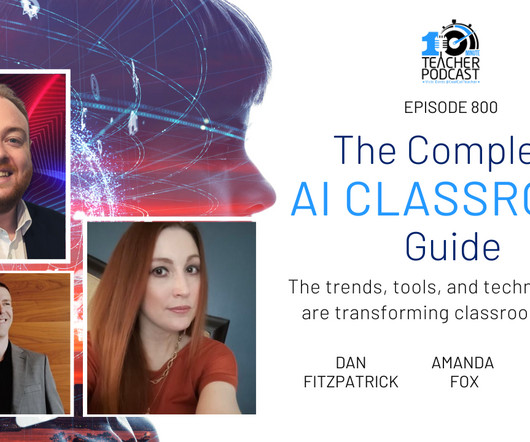AI in the Classroom: A Complete AI Classroom Guide
The CoolCatTeacher
APRIL 6, 2023
D-ID – Digital people text to video Prof Jim – AI text to video to add to lessons Speaker Bios as Submitted Dan Fitzpatrick Dan Fitzpatrick is the author of The AI Classroom: The Ultimate Guide to Artificial Intelligence in Education. 00;01;22;17 – 00;01;23;14 Vicki Davis Take it away, John.















Let's personalize your content